Maternity leave in Africa is central to labour rights, public health and economic planning. For global and home-grown employers alike, understanding how every jurisdiction regulates leave, funds benefits and taxes associated costs is essential to building a resilient workforce. This guide unpacks the headline rules across key markets, analyses hidden expenses, and shows how Workforce Africa can help employers remain fully compliant while keeping talent engaged.

Why maternity leave matters for African employers
Across the continent, more women are participating in paid work than ever before, and many are breadwinners. maternity leave in Africa therefore benefits not only families but also talent retention. When employees feel protected, they return to work healthier, more productive and more loyal, outcomes that lower rehiring costs and boost institutional knowledge.
Legal minimums: A patchwork of Statutes
There is no single regional convention that binds all 54 African countries, but most governments draw inspiration from the International Labour Organization’s Convention 183, which calls for a minimum of 14 weeks of paid leave. In practice, statutory periods range from the 90 days available in Nigeria to the generous six months granted in Côte d’Ivoire for multiple births. Every employer must therefore calibrate its maternity leave policy in Africa to each local labour code. In other words, success depends on reading maternity leave in Africa rules line by line, country by country.
Payment Structures
Some countries run social-insurance schemes that reimburse salaries. For example, in South Africa the Unemployment Insurance Fund covers up to 60 percent of earnings for a maximum of four months, while employers top up if contractually obliged. Elsewhere, such as Kenya, the employer bears the full wage, though the government offers tax deductions for those costs. These structures affect payroll forecasts, cash flow and audit processes, making expert guidance indispensable.
Job Protection and Return-to-Work Rights
Protected absence goes hand in hand with an enforceable right to the same or an equivalent position once leave ends. Violating this right exposes employers to reinstatement orders and damages. Some jurisdictions, including Ghana, prohibit dismissal of pregnant employees except in cases of gross misconduct certified by a labour officer. Understanding these guardrails is central to Workforce Africa’s advisory model. We map every clause so that clients avoid costly litigation.
Tax treatment and hidden costs
Employers generally cannot claim maternity pay as a corporate tax credit, but many countries treat such payments as deductible expenses against income. Furthermore, social-security contributions are sometimes waived during leave, reducing payroll burdens. A careful reading of the Finance Act 2024 in Kenya, for instance, shows employers no longer remit the National Social Security Fund for staff on statutory leave. Ignoring these nuances can inflate costs by as much as ten percent.
Beyond wages, consider replacement staff, hand-over training and lost productivity. A multinational paying USD 3,000 monthly in Nigeria and hiring a temporary worker at 80 percent of that sum can spend an extra USD 1,440 over a typical 12-week absence. Workforce Africa’s cost-modelling tool highlights such figures in advance, empowering employers to budget accurately.

Funding Models for Paid Maternity Leave in Africa
When employers talk about paid maternity leave in Africa, funding source matters as much as length.
Globally, three systems dominate: employer-funded, social-insurance-funded and mixed. Africa exhibits a mix that shifts with fiscal reforms.
- Employer-funded schemes dominate anglophone West Africa, where private sector wages remain comparatively high.
- Social-insurance schemes exist in Algeria, Morocco and Egypt, financed through payroll taxes collected by national social-security bodies.
- Mixed models such as Rwanda’s 2022 scheme split the bill equally between employer and employee contributions, supplemented by state subvention.
Each model influences balance-sheet planning and collective bargaining strategy. Parental leave Africa initiatives also intersect here, as more governments extend time off to fathers and adoptive parents. Rwanda now grants fathers 15 fully paid days, while Mauritius allows four weeks for adoptive parents. Harmonising these entitlements with maternity leave in Africa provisions ensures equity and avoids discrimination claims.
Suggested Post: Hiring and Firing in Africa
Crafting a Competitive Internal Policy
Complying with the law is the floor, not the ceiling. Workforce Africa advises taking a holistic view that blends statutory frameworks with company culture. Forward-thinking elements include:
- Flexible start dates allowing leave to begin earlier than the legal minimum, reducing prenatal health risks.
- Gradual return programmes such as part-time weeks for the first month back.
- Access to nursing rooms and childcare vouchers, which lower attrition by up to 30 percent.
Compliance Challenges for Distributed Teams
Remote work has blurred borders, but maternity leave in Africa regulations remain geographically anchored, meaning a single employee could live in Kenya yet be hired through a Nigerian entity. Payroll software often struggles with this complexity. By acting as an Employer of Record across 40 countries, Workforce Africa streamlines tax registration, statutory filings and in-country benefits. When legislative updates shift, our on-ground lawyers update templates overnight, sparing clients from fines.
Scenario Spotlight: Fintech Expansion into Francophone Africa
A Lagos-based fintech asked Workforce Africa to hire support agents in Senegal and Côte d’Ivoire. Our compliance audit highlighted Senegal’s rule that employers must fund three antenatal medical visits but can later reclaim the cost. Adjusting contracts before onboarding saved the client both time and penalties.
Future Trends
- Longer statutory periods: Ethiopia plans to extend leave to 150 days.
- Gender-neutral leave: South Africa may merge maternity, paternity and adoption into one parental scheme.
- Digital claims portals: Kenya’s eCitizen now processes reimbursements online.
Employers that monitor reform agendas will adapt faster and avoid fines.
Practical Steps for Employers
- Audit current contracts against the mandatory metrics for maternity leave in Africa in every operating country.
- Budget for both salary replacements and ancillary costs such as laptops for short-term hires.
- File timely tax documentation to secure any available relief.
- Train managers on respectful communication during pregnancy and return-to-work phases.
- Engage Workforce Africa to manage payroll, compliance and cultural adaptation seamlessly.
Conclusion
Maternity leave in Africa a strategic investment in human capital and retention. Companies that grasp its legal contours, budgetary implications and cultural expectations achieve higher retention and stronger brand equity. Workforce Africa combines continental reach with local insight, guiding businesses through every filing, payslip and policy draft. Partnering with us ensures compliance, protects employee well-being and keeps your growth plans on track.
By trusting Workforce Africa, you de-risk maternity leave in Africa obligations across the continent. Contact us today!






